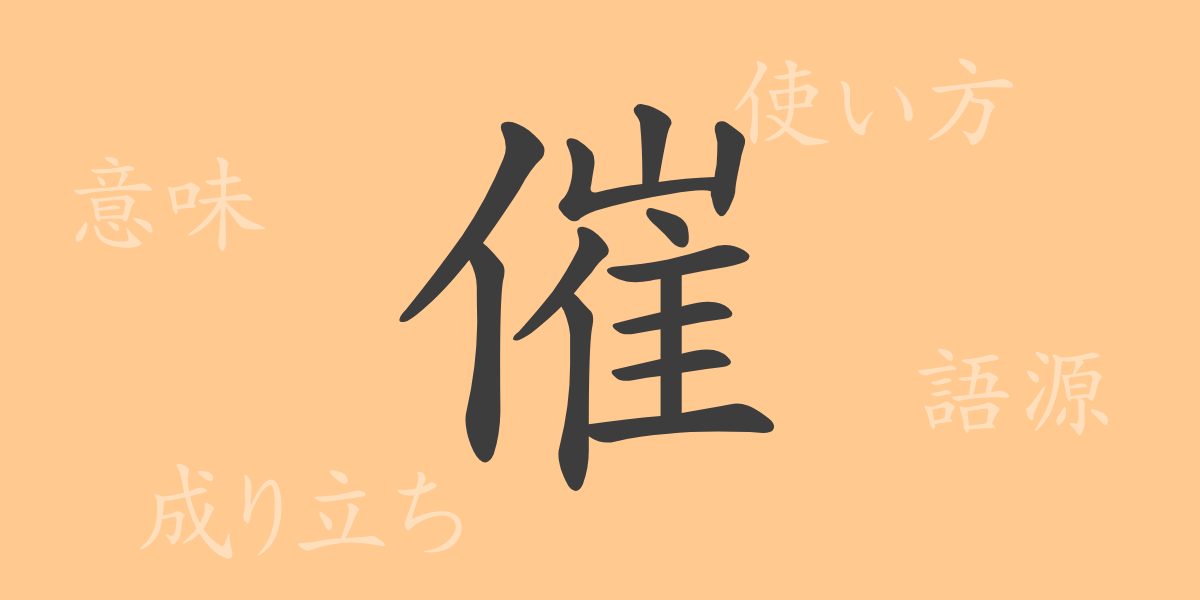Each of the common-use kanji in the Japanese language carries its unique history and meaning. The kanji “催” (sai) is frequently used in our daily lives, but few might be aware of the rich history and diverse usages behind it. This article delves into the origins, modern usages, and idioms involving “催” (sai) to uncover its full charm.
Etymology of 催 (sai)
The kanji “催” (sai) originated in ancient China. This character, derived from pictographs, originally combined “云” (meaning cloud) and “戌” (depicting a dog or the act of driving something). Together, they symbolized the approach of clouds, indicating an impending event or atmosphere. Over time, it evolved to have more abstract meanings like “to prompt” or “to urge.”
Meanings and Usages of 催 (sai)
In modern Japanese, “催” (sai) means “to initiate” or “to conduct” an event, as well as “to evoke” a psychological response. It is often used in contexts such as “催事” (saiji, event) and “催促” (saisoku, urging), referring to promoting an event or making a request.
Reading, Stroke Count, and Radical of 催 (sai)
The kanji “催” (sai) has several readings depending on the context:
- Reading: In the on’yomi reading, it is “サイ” (sai), and in the kun’yomi reading, it is “もよおす” (moyōsu) and “もよおし” (moyōshi).
- Stroke count: “催” (sai) has 13 strokes.
- Radical: The radical is “亻” (にんべん, ninben).
Idioms, Phrases, and Proverbs Using 催 (sai) and Their Meanings
There are many idioms, phrases, and proverbs in Japanese that include “催” (sai), highlighting the richness of the language:
- 催眠 (さいみん, saimin): To induce sleep.
- 催告 (さいこく, saikoku): To notify and inform.
- 催促 (さいそく, saisoku): To urge someone to do something quickly.
- 催事 (さいじ, saiji): An event or function conducted for a specific purpose.
Conclusion on 催 (sai)
Through this article, we hope you have gained a deeper understanding of the diverse aspects of the kanji “催” (sai). This character adds depth and color to our language, going beyond its basic meaning. By appreciating the history and culture behind “催” (sai), you can enjoy richer communication in daily life.

























